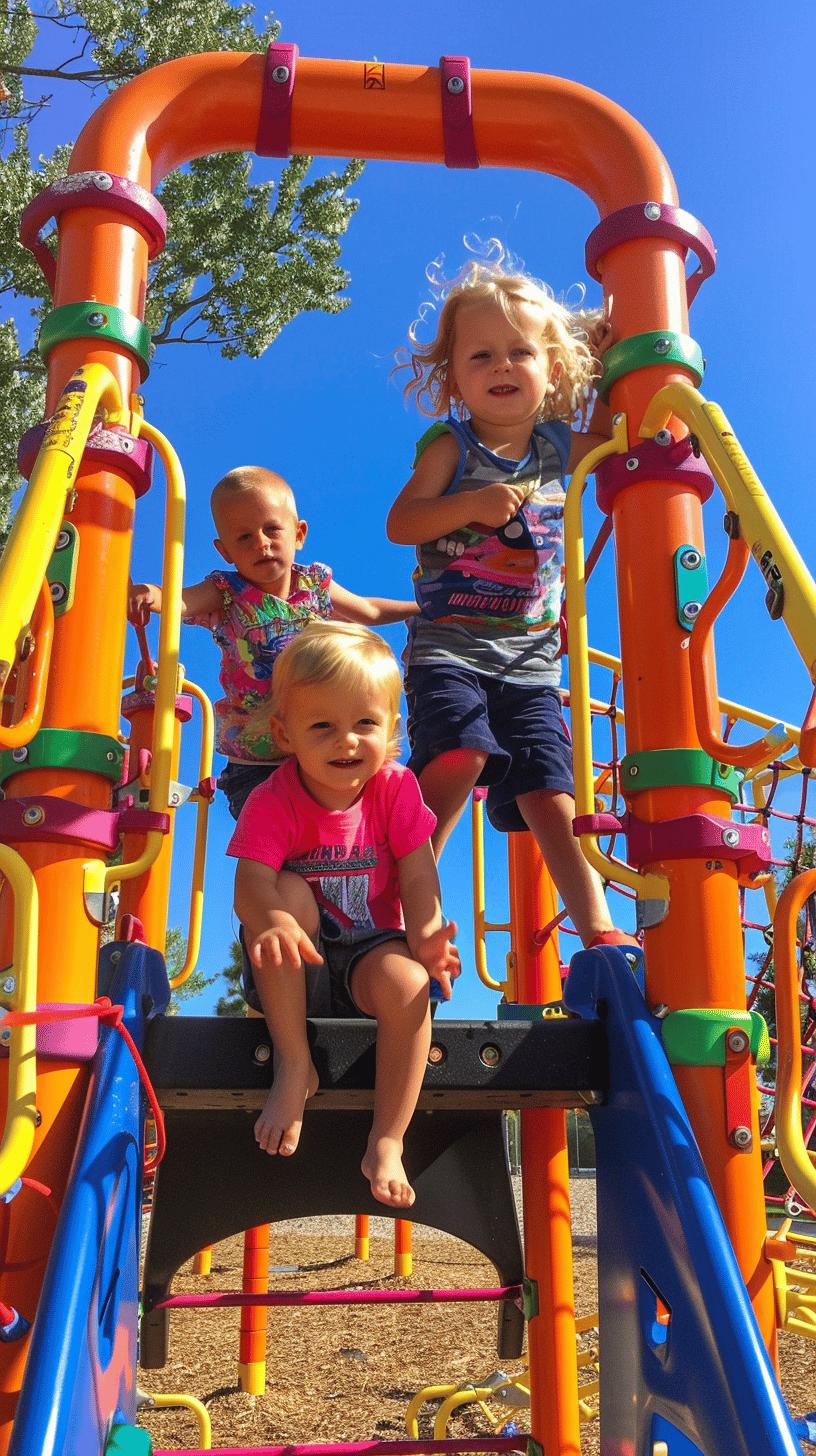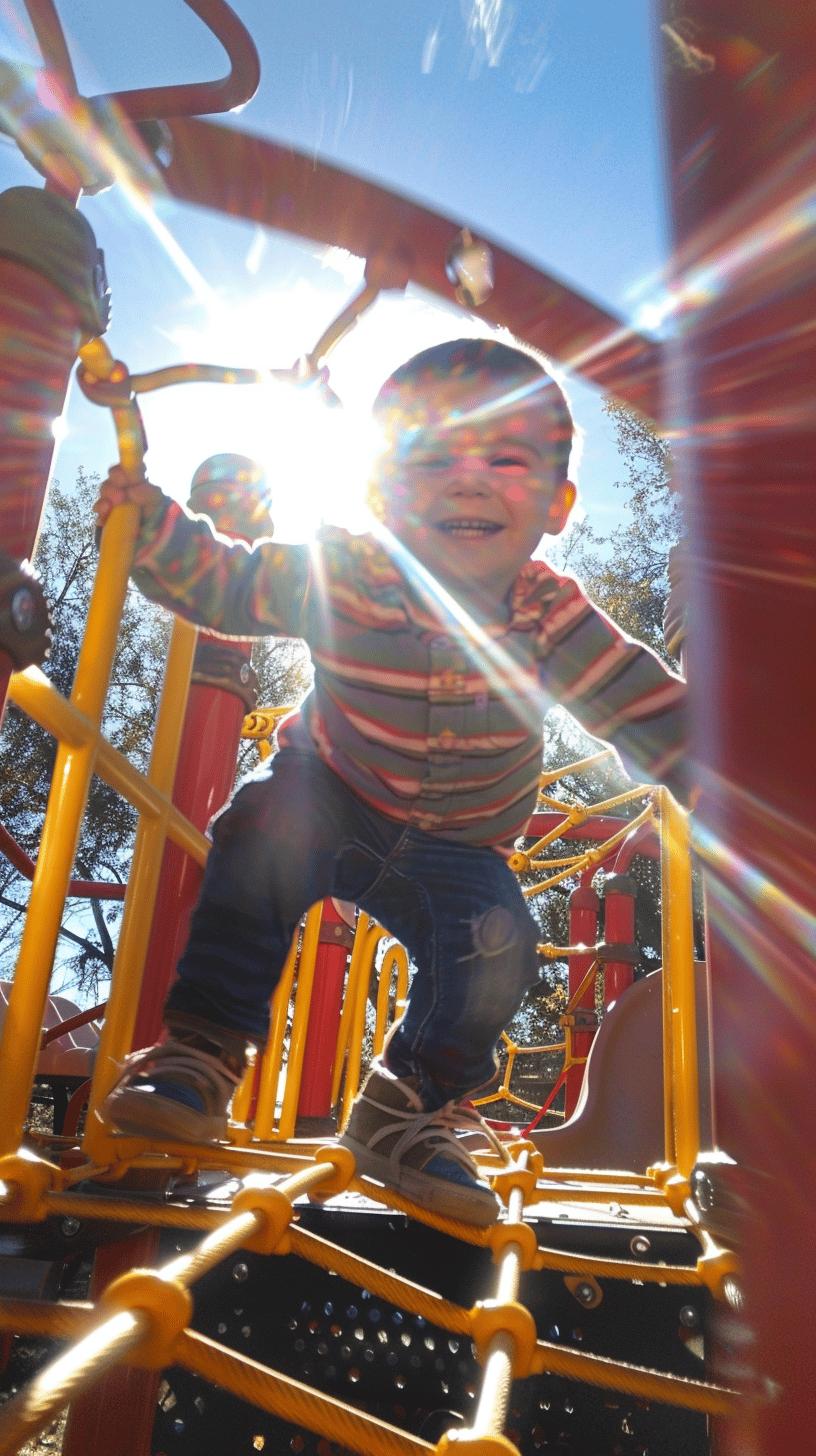How to Encourage Healthy Risk-Taking in Children
When was the last time you let your child climb a tree or run downhill at full speed? It might sound reckless, but encouraging healthy risk-taking is one of the best gifts you can give your child.
Embracing a bit of risk helps children build confidence, develop problem-solving skills, and understand their limits. They learn resilience from facing and overcoming challenges.
But where do you start? And how do you find the balance between safety and letting go? Let's dive in and explore the benefits and strategies for encouraging healthy risk-taking in your children.
Understanding the Benefits of Healthy Risk-Taking in Children
Encouraging children to take risks is crucial for their overall development. It promotes physical health by allowing them to explore their limits, build strength, and improve coordination. Emotionally, risk-taking boosts confidence and self-esteem as children navigate challenges and achieve new milestones. Socially, especially through unstructured play, children learn to understand and follow social norms and rules.
Risk-taking activities significantly contribute to child development. When kids engage in activities that push their boundaries, they develop problem-solving skills and resilience. They also learn to make decisions independently, which is vital for their growth into confident and competent adults.
Benefits of Healthy Risk-Taking:
- Physical Health: Enhances strength, coordination, and overall fitness.
- Emotional Health: Boosts confidence and self-esteem.
- Social Skills: Teaches understanding of social norms and rules.
- Problem-Solving: Encourages critical thinking and decision-making.
- Resilience: Builds the ability to face and overcome challenges.
Overall, healthy risk-taking activities prepare children for real-life situations by fostering independence and resilience. They become more capable of handling both successes and failures, which is essential for their long-term development.
Age-Appropriate Risk-Taking Activities

Age-appropriate challenges are essential for children's healthy development. By engaging in activities that are suited to their developmental stage, children can safely explore their limits, build confidence, and develop crucial skills. Introducing risk gradually helps them to assess their abilities and learn from their experiences.
Preschool Age
Supervised physical activities are crucial for preschoolers. They help young children build foundational skills like balance, coordination, and spatial awareness. Preschoolers benefit most from activities that are carefully monitored to ensure safety while giving them enough freedom to test their abilities.
Age-Appropriate Activities for Preschoolers:
- Climbing on Playground Equipment: Provides opportunities to improve strength and coordination.
- Riding a Tricycle: Helps develop balance and motor skills.
- Simple Obstacle Courses: Encourages problem-solving and agility.
- Nature Walks: Fosters curiosity and exploration in a controlled environment.
Elementary Age
For elementary-aged children, activities that encourage independence and problem-solving are key. At this stage, they are more capable of understanding and managing risks, making it the perfect time to introduce more complex challenges.
Age-Appropriate Activities for Elementary-Aged Children:
- Team Sports: Teaches teamwork, strategy, and physical fitness.
- Building Forts or Structures: Develops creativity and engineering skills.
- Exploring New Hobbies: Encourages trying new things and learning from mistakes.
- Adventure Games: Promotes decision-making and critical thinking through role-playing scenarios.
By tailoring activities to the child's age and developmental stage, parents and caregivers can foster a healthy attitude toward risk-taking. These experiences not only build physical and cognitive skills but also boost confidence and resilience, setting the foundation for a well-rounded development.
Creating a Safe Environment for Risk-Taking
Balancing safety with allowing appropriate risks is crucial for healthy child development. While setting overly strict limits might prevent injuries, it can also hinder physical, emotional, and social growth. Embracing controlled risk environments allows children to improve their skills in assessing and taking risks.
5 Tips for Creating a Safe Environment:
- Start Small: Begin with minor risks to build confidence.
- Set Clear Boundaries: Define what is and isn't acceptable.
- Supervise Closely: Be present to guide and intervene if necessary.
- Encourage Exploration: Provide opportunities for children to explore new activities.
- Teach Safety Skills: Educate children on recognizing and managing potential dangers.
Supervision is key. Being close by allows you to monitor activities while giving children the autonomy to navigate their challenges. This approach helps them feel secure yet independent.
Gradual risk introduction is equally important. Start with low-risk activities and slowly progress to more complex challenges. This method helps children learn to evaluate their limits, making them more resilient and confident over time.
Role of Parents in Encouraging Healthy Risk-Taking

One of the biggest challenges in encouraging healthy risk-taking in children is managing parental fears. Many parents worry about their children getting hurt, both physically and emotionally. This fear can lead to overprotectiveness, which may hinder a child's ability to explore and take risks. Reflecting on your own experiences and understanding the root of these fears can be helpful. Were there times in your childhood when taking a risk led to growth? Sharing these stories with your children can help them understand the value of taking risks. Remember, being close by to guide and intervene if necessary can provide a safety net while still allowing your child to have a sense of autonomy.
Role modeling is another crucial aspect of encouraging healthy risk-taking. Children learn a lot by observing their parents. If they see you taking calculated risks, whether it's trying a new hobby or making a difficult decision, they're more likely to emulate that behavior. Demonstrate how you assess risks, make decisions, and handle outcomes, whether they're successes or failures. This not only teaches them the process but also shows that taking risks is a normal part of life.
Practical tips can make a significant difference in how effectively parents encourage risk-taking. Discuss risks at times that don't directly involve risky situations to help children think critically without immediate pressure. Create environments where taking risks is safe and manageable. For example, set up a backyard obstacle course or let them try new activities under your supervision. Gradually increasing the level of difficulty can help build their confidence and skills over time.
| Parenting Strategy | Description |
|---|---|
| Reflect on Personal Experiences | Share stories from your own childhood to illustrate the benefits of taking risks. |
| Be Close-By | Supervise activities to provide a safety net while allowing autonomy. |
| Role Modeling | Demonstrate how to assess and take risks in your own life. |
| Discuss Risks | Talk about potential risks during calm times to help children think critically. |
| Create Safe Environments | Set up controlled environments where children can take manageable risks. |
Developing Critical Thinking and Problem-Solving through Risk-Taking
Risk-taking activities are a fantastic way to boost critical thinking in children. By engaging in tasks that challenge their limits, kids learn to assess their abilities and make informed decisions. This toggling between activities that are too boring and those that are too scary helps them find the sweet spot where growth happens. These experiences teach children to evaluate situations, think on their feet, and develop creative solutions to problems.
Activities that Promote Problem-Solving and Critical Thinking:
- Puzzle Games: Encourages logical thinking and patience.
- Building Projects: Enhances spatial awareness and planning skills.
- Role-Playing Scenarios: Develops empathy and decision-making abilities.
- Team Sports: Teaches strategy and collaboration.
- Science Experiments: Fosters curiosity and the scientific method.
Decision-making skills are another critical area that benefits from risk-taking activities. When children face challenges, they must weigh options and consider potential outcomes. This process helps them become more confident and competent decision-makers. Over time, they become better equipped to handle real-life situations, making them more resilient and adaptive.
Encouraging Emotional Resilience and Coping with Failure

Risk-taking is a powerful way to boost emotional resilience in children. When kids face challenges and take risks, they naturally encounter both successes and failures. These experiences teach them to handle setbacks and develop a stronger sense of self-esteem. The emotional health benefits of risk-taking are substantial—children gain confidence as they overcome obstacles and achieve new milestones. By mastering new skills, especially when the stakes are higher, children find these achievements more meaningful, which further boosts their self-worth.
Helping risk-averse children can be particularly challenging but absolutely essential. These kids often need gentle encouragement to step out of their comfort zones. Start by introducing small, manageable risks and gradually increase the level of difficulty. Use positive reinforcement to reward their efforts, not just their successes. Reflect on past experiences where they overcame challenges to remind them of their capabilities. Over time, these small steps can build their confidence and willingness to take more significant risks.
On the flip side, some children are natural risk-takers and may need help slowing down to assess safety. For these kids, focus on teaching them to evaluate potential risks and benefits before diving into new activities. Encourage them to think critically about the consequences of their actions. Providing them with structured environments where they can safely test their limits can also be beneficial. This way, they learn to balance their adventurous spirit with a sense of responsibility.
5 Strategies for Encouraging Emotional Resilience and Coping with Failure:
- Positive Reinforcement: Reward efforts and resilience, not just achievements.
- Reflect on Past Successes: Remind children of previous challenges they have overcome.
- Introduce Small Risks: Start with minor risks and gradually increase difficulty.
- Teach Critical Thinking: Encourage children to evaluate risks and benefits.
- Provide Structured Environments: Offer safe spaces where kids can test their limits.
By fostering an environment that encourages healthy risk-taking, you help children develop the emotional resilience they need to face life's challenges. Whether your child is naturally cautious or a born risk-taker, the right strategies can guide them toward balanced and confident risk-taking skills.
Building Social Skills and Peer Interactions through Risk-Taking
Social skills development is crucial for children, and healthy risk-taking plays a significant role in this. When kids engage in risk-taking activities, especially unstructured play, they learn to interact with others, understand social norms, and follow rules. This kind of play fosters communication, negotiation, and teamwork, helping children build essential social skills.
Social Benefits from Risk-Taking Activities:
- Improved Communication: Kids learn to express their thoughts and listen to others.
- Enhanced Teamwork: Cooperation in group activities teaches collaboration.
- Conflict Resolution: Handling disputes during play fosters problem-solving.
- Social Inclusion: Engaging in diverse activities promotes inclusiveness and acceptance.
Cooperative play is a key component in building social skills through risk-taking. Activities that require children to work together, such as team sports or group projects, teach them the value of collaboration and mutual support. These experiences help kids understand the importance of working towards a common goal.
Peer support is equally important. When children take risks together, they provide encouragement and reassurance to one another. This mutual support strengthens their relationships and builds a sense of community. Through these interactions, children learn to trust and rely on their peers, which is vital for their social development.
Final Words
Healthy risk-taking isn't just about adventure; it's integral to growth.
By allowing our kids to face challenges safely, we help them build confidence, problem-solving skills, and emotional resilience.
Let's embrace these opportunities and watch our children flourish. Encouraging healthy risk-taking in children truly nurtures their development and prepares them for life's ups and downs.
FAQ
Benefits of Risk-Taking in Early Childhood
Benefits of risk-taking in early childhood
Encouraging children to take risks promotes physical, emotional, and social development. It helps children build confidence, self-esteem, and social skills. Physical activities help with strength and coordination, while emotional health benefits from overcoming challenges.
How to encourage your child to take risks
Start with small, manageable challenges that are age-appropriate. Praise their efforts, not just their successes. Provide a safe environment where they can explore and test their limits.
Why is risk-taking important in a child's development?
Risk-taking is vital for children’s growth. It aids in developing problem-solving skills, confidence, and resilience. It also teaches children to evaluate and understand their limits, making them better at assessing risks as they grow.
What risks should parents tell their children to avoid?
Parents should inform children about avoiding obvious dangers like strangers, extreme heights, or hazardous substances. The goal is to strike a balance between safety and allowing some risk for learning opportunities.
How should parents teach their children what a risk is?
Explain risks through real-life examples and discuss potential consequences. Use simple, clear language suitable for their age. Encourage them to think critically about situations and make informed decisions.
Why do children need risk, fear, and excitement in play?
Experiencing risk, fear, and excitement in play helps children learn to manage emotions, overcome fears, and enjoy new experiences. It promotes overall mental and emotional resilience.
What are some examples of positive risk-taking in childcare?
Climbing playground structures, trying new sports, participating in group activities, engaging in problem-solving games, and exploring nature are all positive risk-taking activities that promote growth and development.







